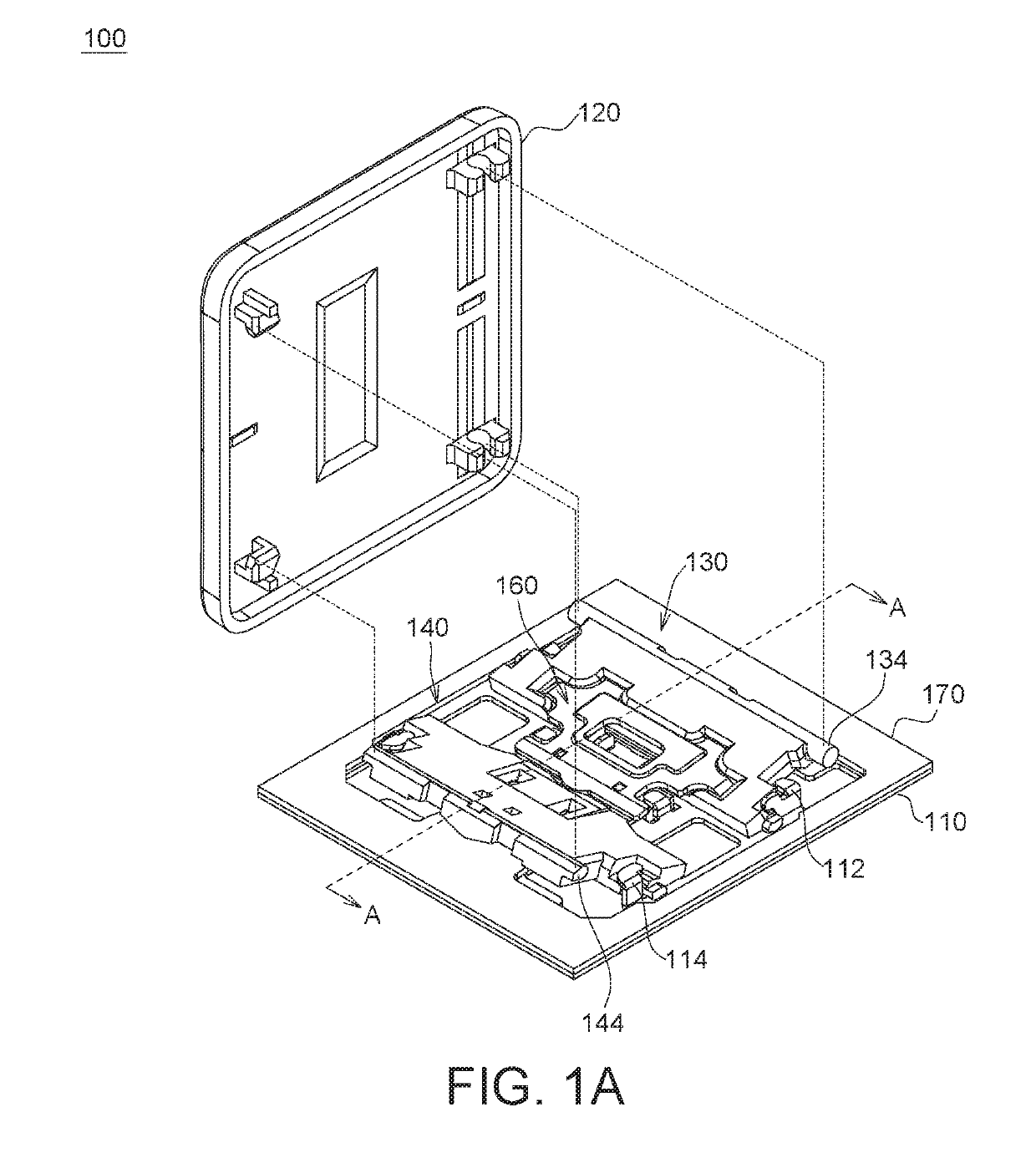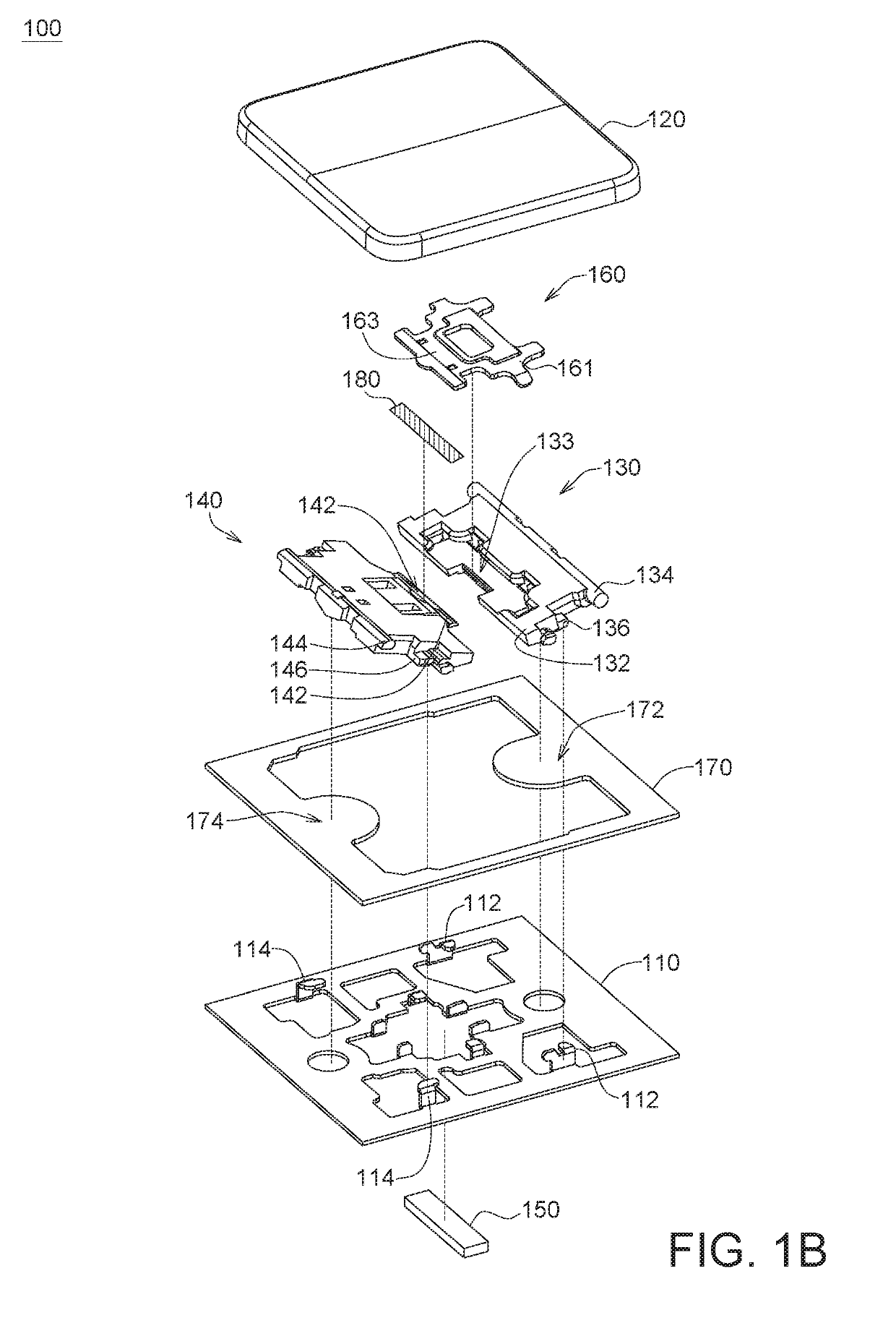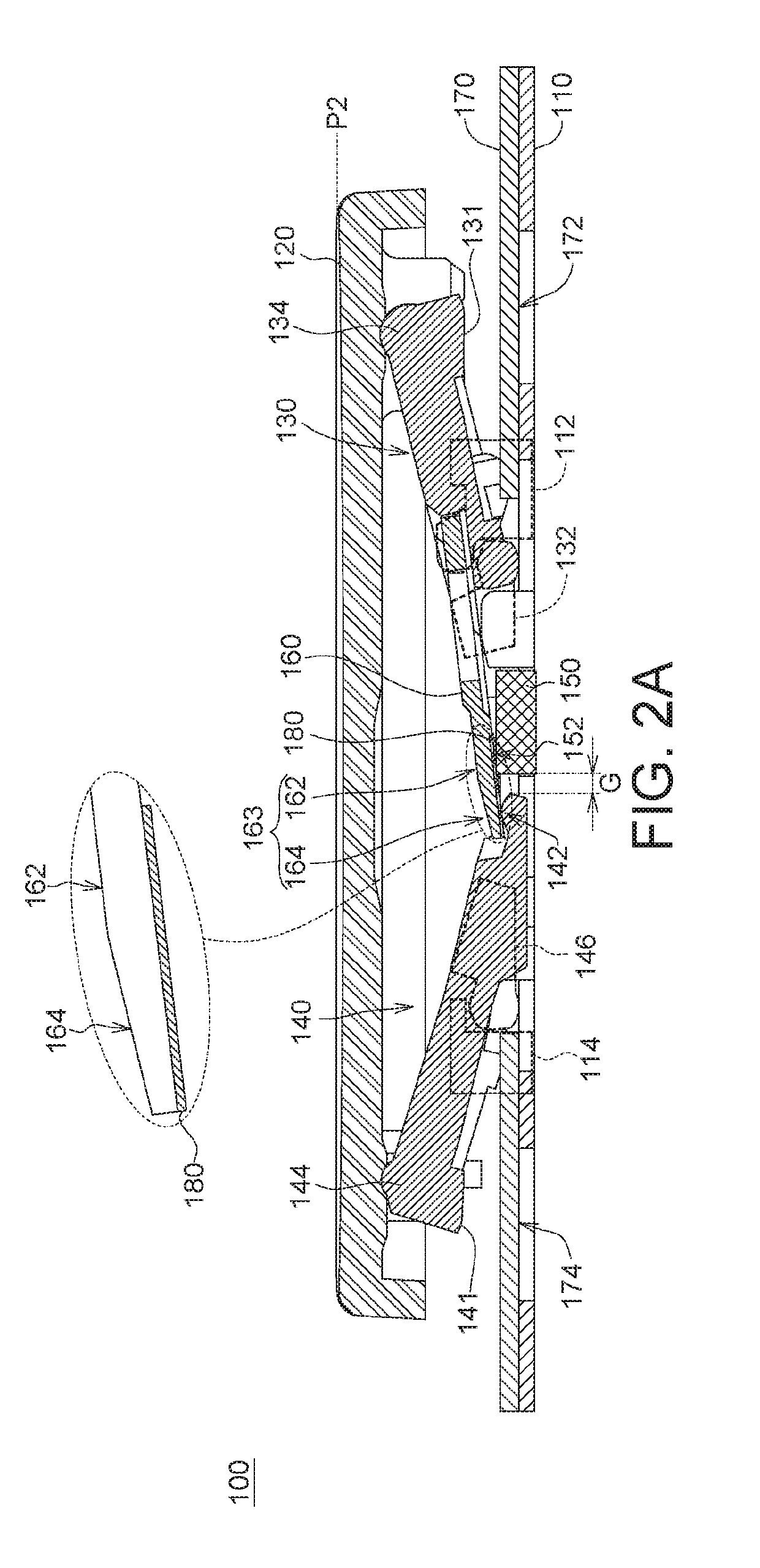Key structure
- Summary
- Abstract
- Description
- Claims
- Application Information
AI Technical Summary
Benefits of technology
Problems solved by technology
Method used
Image
Examples
Embodiment Construction
[0014]Detailed descriptions of the invention are disclosed below with a number of embodiments. However, the disclosed embodiments are for explanatory and exemplary purposes only, not for limiting the scope of protection of the invention. Similar / identical designations are used to indicate similar / identical elements.
[0015]FIG. 1A is an assembly diagram of a key structure 100 according to an embodiment of the present invention. FIG. 1B is an explosion diagram of a key structure 100 according to an embodiment of the present invention. FIG. 2A is a cross-sectional view along a cross-sectional line A-A of the key structure 100 of FIG. 1A not receiving an external force. FIG. 2B is a cross-sectional view along a cross-sectional line A-A of the key structure 100 of FIG. 1A receiving an external force.
[0016]Refer to FIGS. 1A and 1B. The key structure 100 according to an embodiment of the present invention includes a baseplate 110, a key cap 120, a first lever 130, a second lever 140, a firs...
PUM
 Login to View More
Login to View More Abstract
Description
Claims
Application Information
 Login to View More
Login to View More - R&D
- Intellectual Property
- Life Sciences
- Materials
- Tech Scout
- Unparalleled Data Quality
- Higher Quality Content
- 60% Fewer Hallucinations
Browse by: Latest US Patents, China's latest patents, Technical Efficacy Thesaurus, Application Domain, Technology Topic, Popular Technical Reports.
© 2025 PatSnap. All rights reserved.Legal|Privacy policy|Modern Slavery Act Transparency Statement|Sitemap|About US| Contact US: help@patsnap.com



